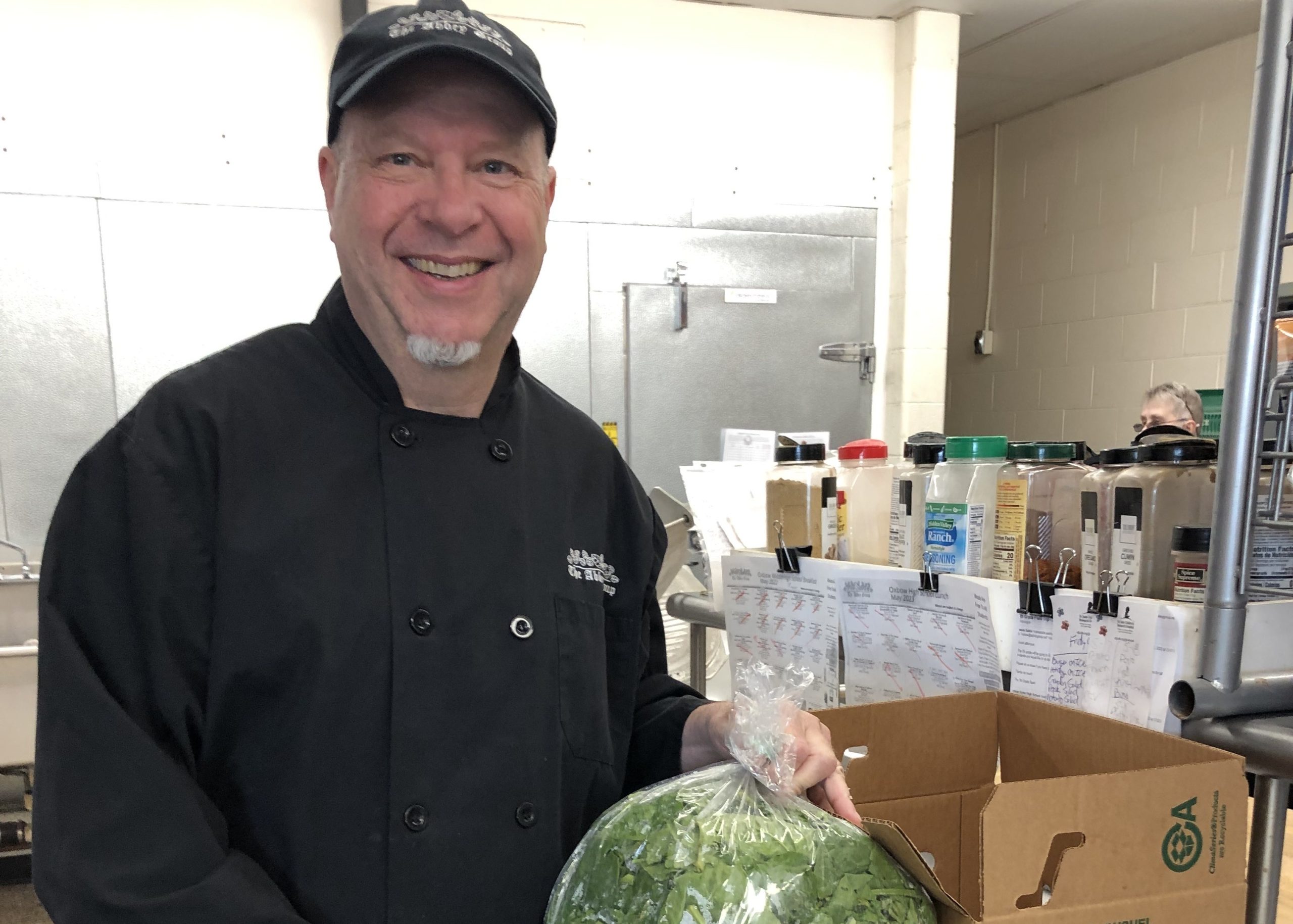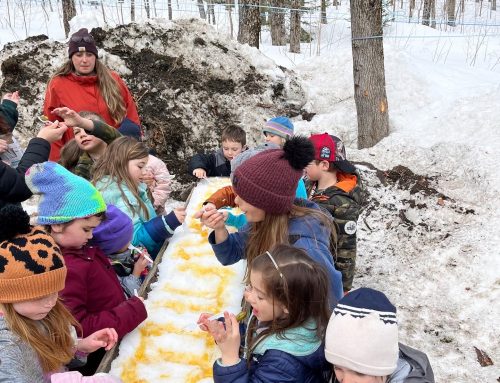Food Service Director Bob Hildebrand holds local spinach (a Harvest of the Month product) grown at Joe’s Brook Farm and sourced through Green Mountain Farm Direct.
June 13th, 2023
Green Mountain Farm-to-School
Contact: Becca Perrin
Food Hub Account Manager
bperrin@gmfts.org | 802.344.2044
For Immediate Release
Central Vermont Supervisory Union Awarded Local Food Purchasing Incentive Grant
Newport, VT: As the Food Service Director for Central Vermont Supervisory Union (CVSU), Bob Hildebrand knows that local food makes a difference to the students he serves and the communities he works within. The CVSU is in its second year of receiving the State of Vermont’s Local Purchasing Incentive grant, which provides financial incentives to school districts and supervisory unions (SU/SDs) that meet local food purchasing targets. CVSU has been successful in meeting these targets, with 16% of their total food budget going towards local Vermont foods. The supervisory union now enters its second year as a grant recipient, along with four other SU/SDs across the state in 2023 (Burlington School District, Mt Abraham Unified School District, Windsor Central Supervisory Union, Windham Northeast Supervisory Union).
For Hildebrand, investing in the local food system was a priority before the grant became available, but he says the funding has allowed him to stretch dollars further to focus more on local purchasing. Year over year, he sees the potential for this grant to incrementally increase the proportion of locally-sourced ingredients used in school meals. Hildebrand believes that is a win-win for everyone involved. He says there are three main reasons why it is important to prioritize local food purchasing in schools: “1. It gives students the best possible meal because the quality of the food is better and fresher when it hasn’t had to travel far. 2. Local food connects kids with the local agricultural economy and teaches them to become better lifelong consumers and eaters. 3. Purchasing local food supports our neighbors. The money is staying in Vermont and has a multiplier effect on the local economy.”
How does Hildebrand source local food? It’s a combination of approaches. Some food is coming directly from farmers and producers. He notes that distribution with small farmers is the biggest hang-up in the system currently, with farmers having a limited delivery radius and limited times they are able to deliver. Another source Hildebrand utilizes is Green Mountain Farm Direct, a food hub program from Green Mountain Farm-to-School. “Working with Green Mountain Farm Direct is great in that it allows me to have one point of contact for produce from a variety of sources. I can shop in one place.”
Hildebrand’s advice to other schools that want to increase local food purchasing is to “find some big flagship items that are produced locally and commit to them.” For Hildebrand these flagship items are things like yogurt, beef, and maple syrup. Utilizing the Harvest of the Month program to design menus around monthly seasonal products has been effective for this approach. All of the schools Hildebrand works with are signed up for the Harvest of the Month program. “Harvest of the Month products are convenient to work with and we know that it’s coming all year. It also teaches students about seasonality and that’s an important component to what we are doing, incorporating the cafeteria into their education.”
As with any government grant, there is administrative work involved in terms of limitations and tracking. The first grant year, or “Baseline Year”, is intended to offer time for schools to get their systems in place. The Baseline Year was a learning curve for Hildebrand, but “It’s worth it,” he says. “Serving local food in the cafeteria helps students connect with and appreciate what they’re eating. If I’m able to tell them this is Vermont maple syrup or potatoes from up the road, they gain an appreciation for the farmers and producers in their community and it naturally segues into many different lessons in the classroom, especially if the school is participating in Harvest of the Month or Farm-to-School programming.”
Last year, a total of $775,307.14 was put into the local economy due to SU/SD food purchasing. The Vermont Agency of Education hopes that other SU/SDs will “use the framework created to continue to apply for subsequent years of grant funding.” You can learn more about the grant program and see details about different SU/SDs local spending in this legislative report.
About Green Mountain Farm-to-School:
Green Mountain Farm-to-School (GMFTS) is a nonprofit organization based in Newport, VT that strengthens local food systems by promoting positive economic and educational relationships between schools, farms, and communities in the Northeast Kingdom and throughout Vermont. GMFTS distributes local food, provides nutrition education, and increases food access through their farm-to-school program, regional food hub, mobile summer meal service, and other food access initiatives. For more information, visit gmfts.org or call 802-334-2044.
Green Mountain Farm-to-School
115 2nd Street, Newport, VT 05855





